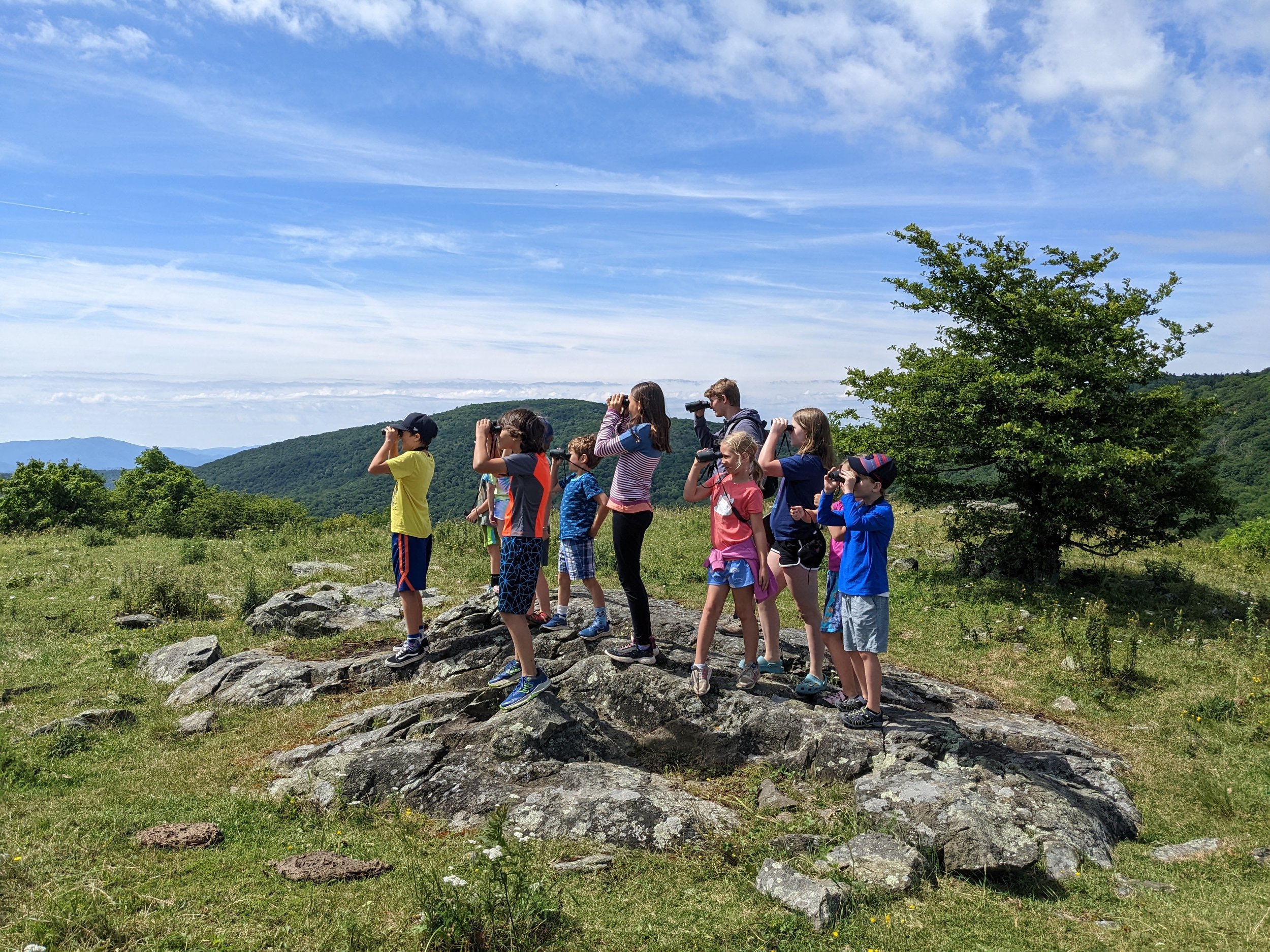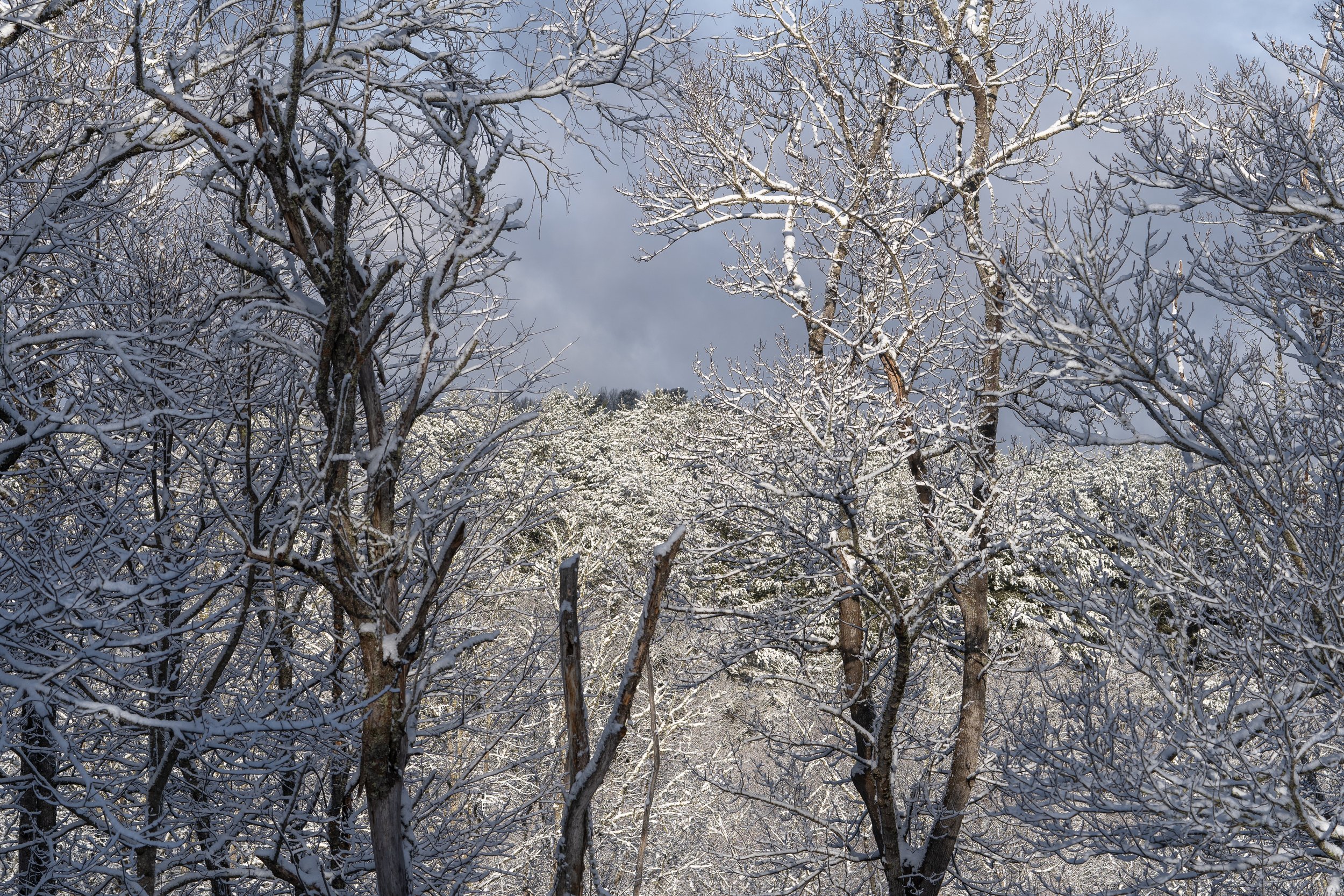The Twin County Community Foundation (TCCF) continues to support Blue Ridge Discovery Center through a grant to get students outside engaged in nature.
Fall Rally Re-Cap!
Residential Program with Carroll County
Naturalist/Educator Position Opening
Rally, Rally, Rally!
Mt. Roger's Fall Naturalist Rally Keynote Speaker: Michael St. Germain
It's Hummingbird Migration Season!
Pre-Order Your Fall Naturalist Rally T-Shirt!
Residential Overnight Programs at BRDC
Fall Naturalist Rally coming this October!
Virginia Tech Wildlife Student Research at the BRDC
This past week the Blue Ridge Discovery Center has been host to Dr. Marcella Kelly’s Wildlife Field techniques course where students from Virginia Tech in the Wildlife Conservation program get to spend nine days in the great outdoors learning an array of field techniques that are used to monitor wildlife populations. Some of these techniques include camera trapping, small mammal trapping, mist netting for birds and bats, and salamander surveys. Over the past week, these students spent time as a large group adventuring around the Blue Ridge Discovery Center property and surrounding Blue Ridge Mountains.
Starting this week the students have broken off into smaller research groups to conduct more specialized researched projects of their choosing. This year’s student-led research projects will be the preliminary data for a multi-year project on the BRDC campus and surrounding Elk Garden area, meaning that each year groups of Virginia Tech students will conduct similar research at the BRDC campus and use this data to assess changes over multiple years.
Salamander Research:
Student-led salamander research projects are focusing on habitat and demographics at three different elevations of 3100 ft, 3700 ft, and 4300 ft on trails surrounding the BRDC to compare how salamander species differ as elevation changes. Where research projects focusing on habitat will focus more specifically on the type of environment each salamander resides in and the demographic research project will assess the number of salamander species found at each field site. Students were led in the field by Dr. Kevin Hamed.
Small Mammal Research:
Small mammal researchers also split their focus into two projects likewise assessing the habitat and demographics of small mammals that were trapped on BRDCs property and at sites at Elk Garden. The habitat research focuses on environment types that attract specific mammals and the demographic group is focused more on the number of different species of small mammals at each field site. These box traps are filled with bait every evening and checked the following morning for small mammals. One of their focuses is to find out what type of vegetation specific small mammals are most likely to be found. Students were led in the field by Dr. Marcella Kelly.
Bat Research:
Bat researchers are using acoustic monitors that can be used to identify bat species by call, to assess the species of bats around BRDCs campus and surrounding trails. These bat detectors can detect high frequency ultrasound, where one focus of the projects is finding out which locations bats utilize the most during the night based on their calls and what times bats call more. Students also got the chance to see a colony of big brown bats leaving the property around dusk, where Dr. Mike St. Germain from the Conservation Management Institute led a mist netting lab to trap and tag part of the colony.
Bird Research:
Bird researchers are conducting point counts to assess the presence or absence of five common bird species at three field sites which include Whitetop, Elk Garden, and Lewis Fork. The five species being surveyed include the Eastern Towhee, the Dark-eyed Junco, the Golden-crowned Kinglet, the Red-breasted Nuthatch, and the White-Breasted Nuthatch. In each of the three different surveying locations, students look and listen for birds to identify which species are calling and how far away they are. They will also compare what combinations of their desired birds are calling at the same time at each location. Students also got the chance to participate in a bird banding workshop led by Dr. Ashley Peele and Shawn Kurtzman from the Conservation Management Institute.
Camera Trap Research:
Camera trap researchers are using twenty-six trail cameras to identify what different species of all animals cross the trail. They will use this data to assess which habitat certain animals are most likely to be found in. They will also be assessing species differences based on elevation. The camera traps, along with the bat detectors that the bat researchers are using, are set up in multiple locations on trails surrounding the BRDC. Since the camera trap researchers and bat researchers are using the same locations, they are able to assist in each other's projects by splitting the map of the sites in half, meaning both groups will be checking both camera traps and bat detectors at the same time. Once both groups check their designated camera sites, they report back to each other with data. Students are led through this with the assistance of graduate assistant David Lugo.
The staff at the Blue Ridge Discovery Center have thoroughly enjoyed having the Wildlife Conservation students and their instructors on our campus and we cannot wait to see how their research grows over the next couple of years! To see pictures from their research check out our Instagram and Facebook page.
Seeking Applications for Naturalist/Educator
Rooms for a Naturalist
Drawing From Nature with Suzanne Stryk
48th Annual MRNR Keynote Speaker
The Rally is back!
We are very excited to announce the return of the Naturalist Rally!! After a two year remote hiatus the 48th Annual Mount Rogers Spring Naturalist Rally is back in full force May 6-8! Online ticket purchasing and room reservation is now available.
Summer Camp Scholarship Opportunity
Seeking Applications for Chief Naturalist/Educator
Blue Ridge Discovery Center is seeking applications for a Chief Naturalist/Educator (N/E) to help connect our regional youth and adults to one of the greatest natural treasures in the east. This is an excellent opportunity to hone your leadership and management skills and make a lasting impact on the next generation of stewards.
February Events
As the temperatures cool down, Blue Ridge Discovery Center isn’t slowing down! With darkness settling in sooner in the evenings, we are entering the prime season for stargazing. And with trees and shrubs losing their foliage, the winter months allow for fewer visual obstructions during birdwatching, including sighting rare wintering birds from the far north. There’s something for everyone over the coming months. Join us! Click event titles for more information.































